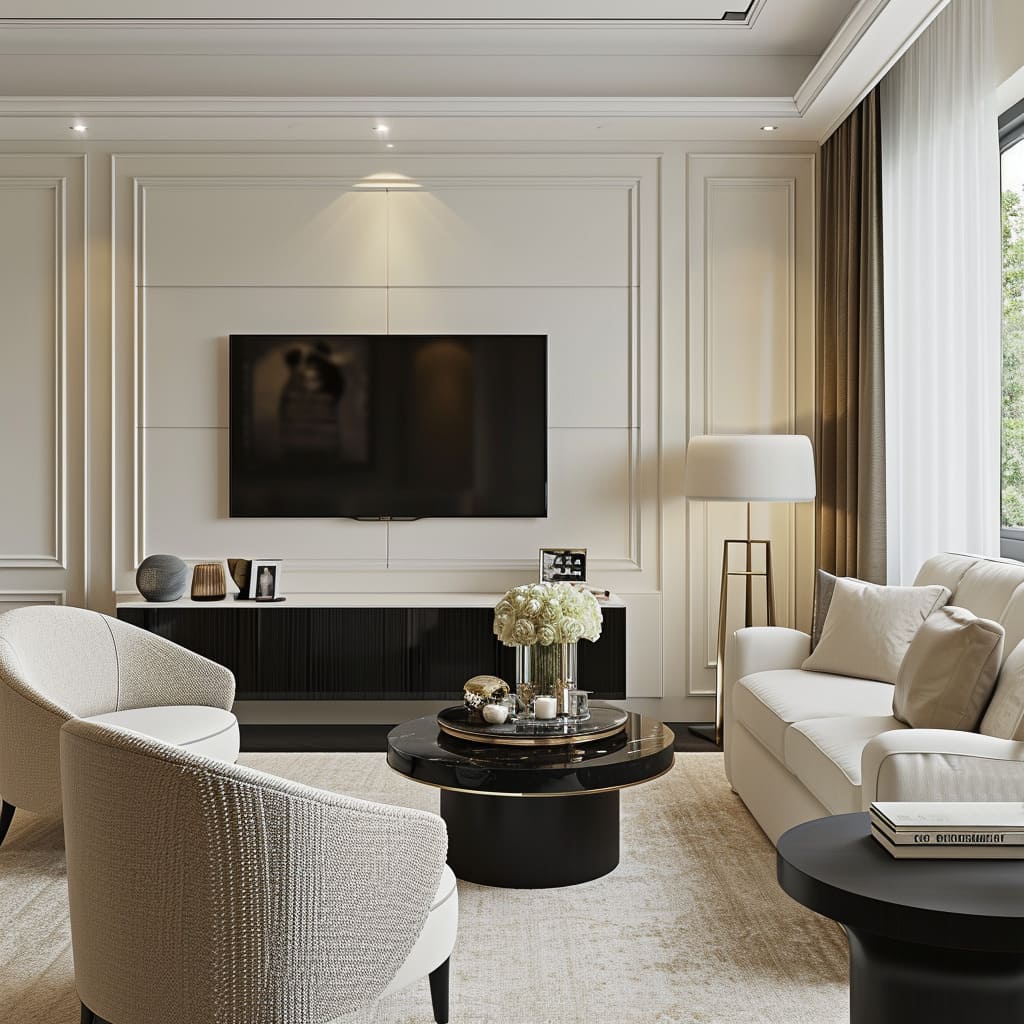Understanding Classic Contemporary Interior Design
Classic contemporary interior design is a style that masterfully combines the charm of classic aesthetics with the streamlined elegance of contemporary design. In my personal experience with home renovation, this blend creates a warm and inviting atmosphere while maintaining a modern edge. This design philosophy is all about balance — think of traditional elements like ornate moldings paired with modern furnishings and clean lines.
Key Characteristics of Classic Contemporary Interior Design
1. Color Palette
The color palette is a crucial element in classic contemporary design. It typically features neutral tones such as whites, grays, and beiges, complemented by bold accent colors like navy or emerald green. These shades work together to create a soothing yet sophisticated environment.
2. Materials and Textures
This style often incorporates a mix of traditional and modern materials. Think luxurious textiles like velvet and silk combined with minimalistic metal and glass. These materials add depth and interest to a room, making it feel both cozy and chic.
3. Furniture Style
The furniture in classic contemporary design usually features clean lines with a hint of intricacy. Look for pieces that have a timeless quality, like a classic wingback chair paired with a modern glass coffee table. This contrast can create a striking focal point in your living space.
4. Lighting Fixtures
Lighting is another critical component. Chandeliers with a contemporary twist or sleek pendant lights can effectively bridge the gap between classic and modern aesthetics. The right lighting can enhance the intricate details of classic elements while highlighting the simplicity of contemporary designs.
How to Achieve Classic Contemporary Interior Design
Step 1: Start with a Neutral Base
Begin with a neutral color palette for your walls and larger furniture pieces. This creates a blank canvas that allows you to layer in accessories and accents that reflect your style.
Step 2: Incorporate Timeless Elements
Add classic elements such as moldings, wainscoting, or antique furniture to your space. These details add character and richness to the design.
Step 3: Mix Modern Accents
Layer in modern accents through your accessories, such as artwork, vases, and decorative pillows. Choosing contemporary pieces that resonate with the overall theme is essential to maintain that balance.
Step 4: Focus on Texture
Bring in various textures to add depth. This can include woven rugs, upholstered furniture, and metallic decor that all coexist harmoniously.
Step 5: Mind Your Scale
Scale is vital in creating a balanced look. Pair oversized classic furniture with sleek modern pieces to achieve the perfect harmony. For example, a large traditional sofa can be beautifully complemented by a small, contemporary side table.
Pros and Cons of Classic Contemporary Design
| Pros | Cons |
|---|---|
| Timeless elegance that never goes out of style | Can be expensive to achieve the desired look |
| Highly versatile and customizable | Requires a keen eye for balance |
| Combines comfort with sophistication | Risk of appearing cluttered if not executed properly |
Classic vs. Contemporary: Understanding the Differences
To fully appreciate classic contemporary interior design, it’s crucial to understand how it differs from purely classic or contemporary styles.
| Aspect | Classic Design | Contemporary Design | Classic Contemporary Design |
|---|---|---|---|
| Color Palette | Rich, deep colors | Bright, airy colors | Neutral base with bold accents |
| Furniture Style | Ornate and detailed | Sleek and minimalistic | Combination of both |
| Materials Used | Wood, brass, rich fabrics | Glass, metal, synthetics | Mix of both |
| Overall Feel | Formal and traditional | Casual and informal | Elegant yet comfortable |

FAQs About Classic Contemporary Interior Design
1. What is the difference between classic and contemporary interior design?
Classic interior design focuses on traditional elements, ornate details, and rich colors. In contrast, contemporary design emphasizes clean lines, minimalism, and a more relaxed color palette. Classic contemporary design merges the two, creating a sophisticated yet comfortable atmosphere.
2. Can I use vintage furniture in a classic contemporary design?
Absolutely! Vintage furniture can be a perfect addition to classic contemporary interiors. The key is to balance it with modern pieces to maintain the overall aesthetic harmony.
3. What types of textures work well in classic contemporary design?
A variety of textures enhance classic contemporary design. Combining soft textiles, like velvet and linen, with hard surfaces, like glass or metal, creates visual interest and depth. Don’t shy away from patterned rugs or textured wallpaper!
4. Is classic contemporary design suitable for small spaces?
Yes, classic contemporary design can work beautifully in small spaces. Choosing lighter colors, using multifunctional furniture, and incorporating mirrors can help create an illusion of space while adding elegance.
Final Thoughts: Embracing Classic Contemporary Interior Design
Classic contemporary interior design is more than just a style; it’s an experience. Embracing this design philosophy allows you to create a space that reflects your personality while honoring the beauty of the past and the innovation of the present. With careful consideration of color, materials, and balance, you can craft a home that feels timeless yet fresh. Having navigated this journey myself, I can assure you that the results are worth the effort — a harmonious living space that you will cherish for years to come.